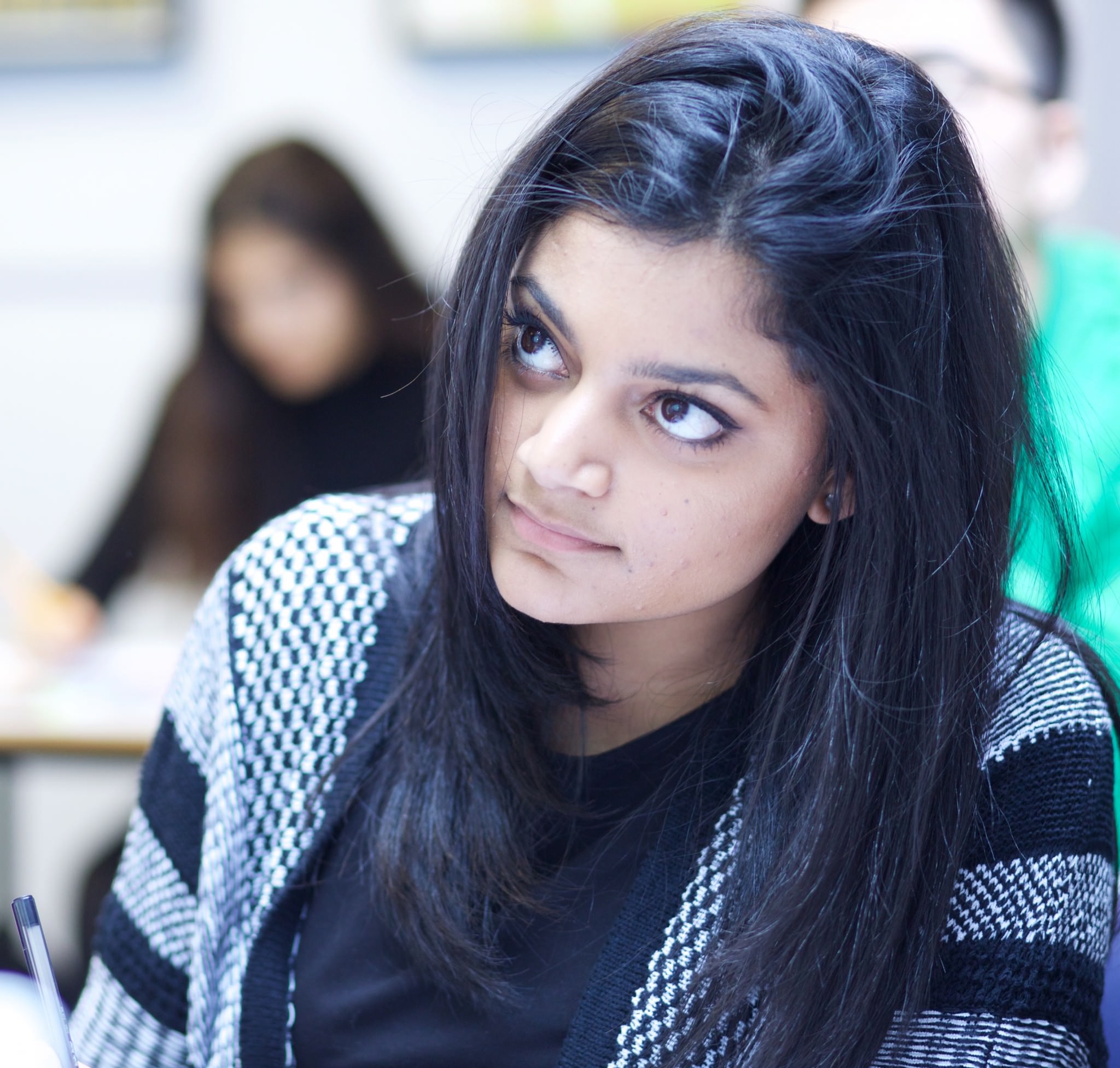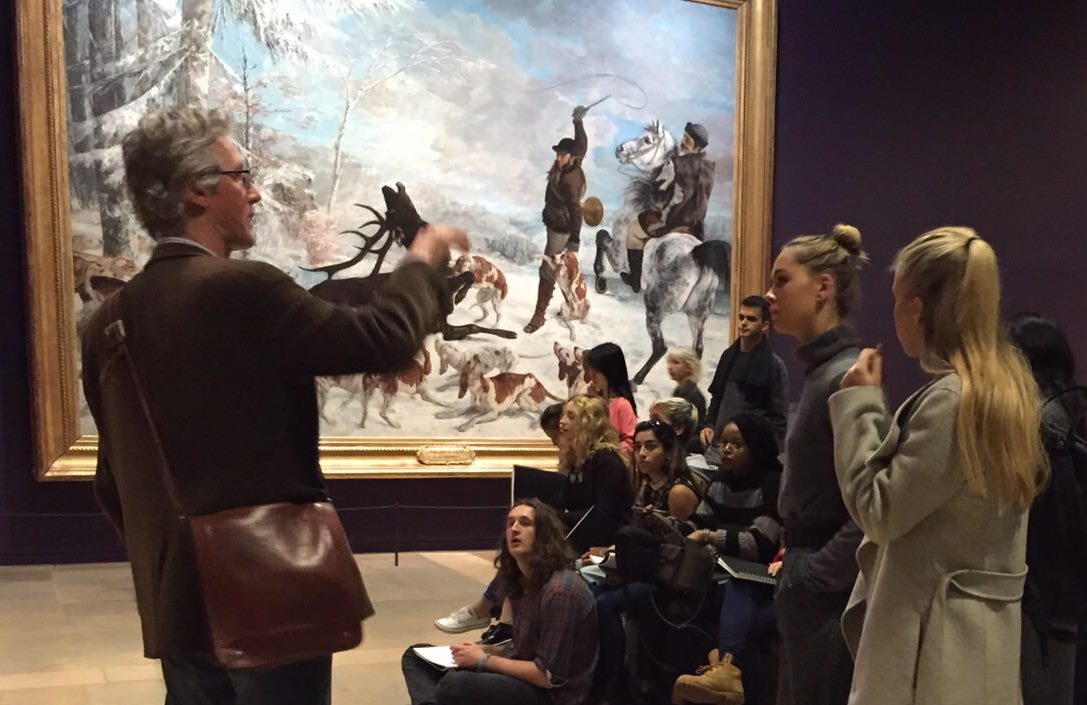Ashbourne follows the Edexcel specification for A level History of Art.
The three main areas of this linear A level course are visual analysis, themes and periods.
Visual analysis
Mother and Child (1943), Hepworth
How is this sculpture made? What materials were used and why? What was the technical process in making the piece? How has the sculpture been conceived to convey a specific meaning? Was it created for a specific location? Why has the sculptor chosen abstraction?
In this section of the syllabus students learn to analyse the formal characteristics of works of art and architecture and begin to interpret the choices made by artists relating to subject matter, materials, techniques and processes, and the impact these have on meaning and effect. They will examine the artist’s manipulation of elements – such as composition, line, scale, texture, colour and space for example – to create an effective visual language.
Themes
Nature in art and architecture (B1)
The natural world plays a vital role in shaping art and architecture. Students examine a wide range of artists (listed in full below) to explore the ways in which motifs, messages and material found in nature are used by artists and architects.
JMW Turner: Snowstorm – Steam Boat off a Harbour’s Mouth (1842); Rain, Steam, and Speed – The Great Western Railway (1844)
Barbara Hepworth: Oval Form (Trezion) (1961-3); Squares with Two Circles (1963)
Frank Lloyd Wright: Taliesin (1937); Fallingwater (1935)
Katsuhika Hokusai: The Great Wave off Kanagawa (British Museum c. 1833)
Ai Weiwei: Sunflower Seeds (Tate Modern 2010)
Angkor Wat (Cambodia c. 1150)
Abu al-Hasan: Squirrels in a Plane Tree (British Library 1610)
Wen Zhengming: Wintry Trees (British Museum 1543)
Constantin Brancusi: Bird in Space (MOMA NY 1924)
Max Ernst: Europe After the Rain II (1940-2)
Identities in art and architecture (B2)
Students investigate the ways artists and architects represent their identities – social, religious, ideological, cultural etc. – through art and architecture, particularly focusing on the evolution of cultural traditions, their cross-fertilisation with other cultures, and their re-interpretation in the contemporary period.
Jan van Eyck: The Ghent Altarpiece (1432); The Arnolfini Marriage (1434)
Grayson Perry: Huhne Vase (2014); I’m a Man (2014)
Richard Rogers: Pompidou Centre, Paris (1977); Senedd, Cardiff (2006)
Bichitr: Shah-Jahan receives his three eldest sons and Asaf Khan during his accession ceremonies (1628, Royal Collection)
Shiva Nataraj (c. 1100, Victoria and Albert Museum)
Mimar Sinan: Sülemaniye Mosque, Istanbul (1558)
Yoruba Mask for King Obalufon Ife (c. 1300, British Museum)
Gianlorenzo Bernini: Bust of Costanza Bonarelli (1635)
Pablo Picasso: Yo, Picasso (1901)
Marc Chagall: The Fiddler (1912)
Periods
Brave new world: Modernism in Europe (1900–39) (C4)
Art in Europe and America changed significantly in the early 20th century as artists responded to the challenges of a changing urban environment and new ways of seeing prompted by developments in science, philosophy and in visual culture, such as photography and cinema. Students have the opportunity to explore a selection of European and American artists and some of the key movements and styles of the era such as Fauvism, Cubism, German Expressionism, Futurism, Dada and Surrealism as well as the new ideas of Modernism in architecture.
Pop life: British and American contemporary art and architecture (1960–2015) (C5)
The 1960s witnessed the expansion of consumer culture, along with widespread political upheaval as groups of young people expressed their opposition to a range of issues. In many ways, this decade laid the foundations for society today: from celebrity culture to democratic claims made by some for the internet. By surveying the works, trends and styles of art across two key countries students will be able to explore the impact and effects of change in art and architecture with a detailed understanding of the context of the era.
Katie Pettitt
MA Contemporary Art Theory and Criticism (Essex); BA English Literature and History of Art (Joint Honours) (Birmingham); PGCE Post-Compulsory Education and Training (UEL)
Katie studied History of Art and English Literature at undergraduate level at the University of Birmingham and holds a Master’s degree in Contemporary Art Theory from the University of Essex. Katie has held various roles in the arts sector in London, including working for the Institute of Contemporary Arts (ICA), Anne Thorne Architects and most recently the Olympic Delivery Authority (ODA), for which she collaborated with internationally acclaimed artists on innovative and high-profile art projects in and around London’s Olympic Park. Before teaching at Ashbourne, Katie established History of Art A level at the International School of Creative Arts (ISCA), the only specialist day and boarding school run in association with University of the Arts London (UAL). She joined Ashbourne in 2012 and now teaches History of Art, Media Studies and English. Katie is passionate about engaging students’ interest and encouraging them to develop their enthusiasm for literature and art history both in and outside the classroom.
Will Stockland
Head of Faculty for Culture and Society and Oxbridge Programme Lead
MA History of Art (Edinburgh)
Will Stockland studied art history as an undergraduate at the University of Edinburgh, where he specialized in Tudor and Stuart English art, Italian Renaissance art, French Modernist art, and Islamic art and architecture. He has also studied Central Asian and Persian art at the School of Oriental & African Studies (University of London) and the University of Oxford, and is the author of several art-historical publications. Will has taught art history at the Centre for Medieval & Renaissance Studies, Oxford Royale Academy, Oxford Tutorial College, Carfax Tutorial College, and Tudor Hall School, and has assisted with research and cataloguing at the Ashmolean Museum and the Victoria & Albert Museum.
Will is passionate sharing his own love of art and its history. He is a great communicator and is very experienced in preparing students for the challenges of the A level History of Art syllabus.
A World History of Art, Hugh Honour and John Fleming
(Laurence King, 7th Edition)
An impressive and extensive history of art and architecture across the globe, from the earliest cave paintings to the 21st century.
The Story of Art, E.H. Gombrich
The classic overview for all beginners in art history.
Ways of Seeing, John Berger
(Penguin Classics, 2008)
A landmark study of visual experience.
The Shock of the New: Art and the Century of Change, Robert Hughes
Hailed as the best, most readable and provocative account of modern art ever written. Covers one hundred years of modern art from cubism to pop and avant-garde.
Gallery bookshops
You will find a wide range of art books at all the major galleries including The National, The Portrait, Tate Britain and Modern and the Royal Academy.
Exhibitons
What’s on and where
TimeOut’s guide to art in London keeps you up to date with current and upcoming exhibitions at galleries across the city.


